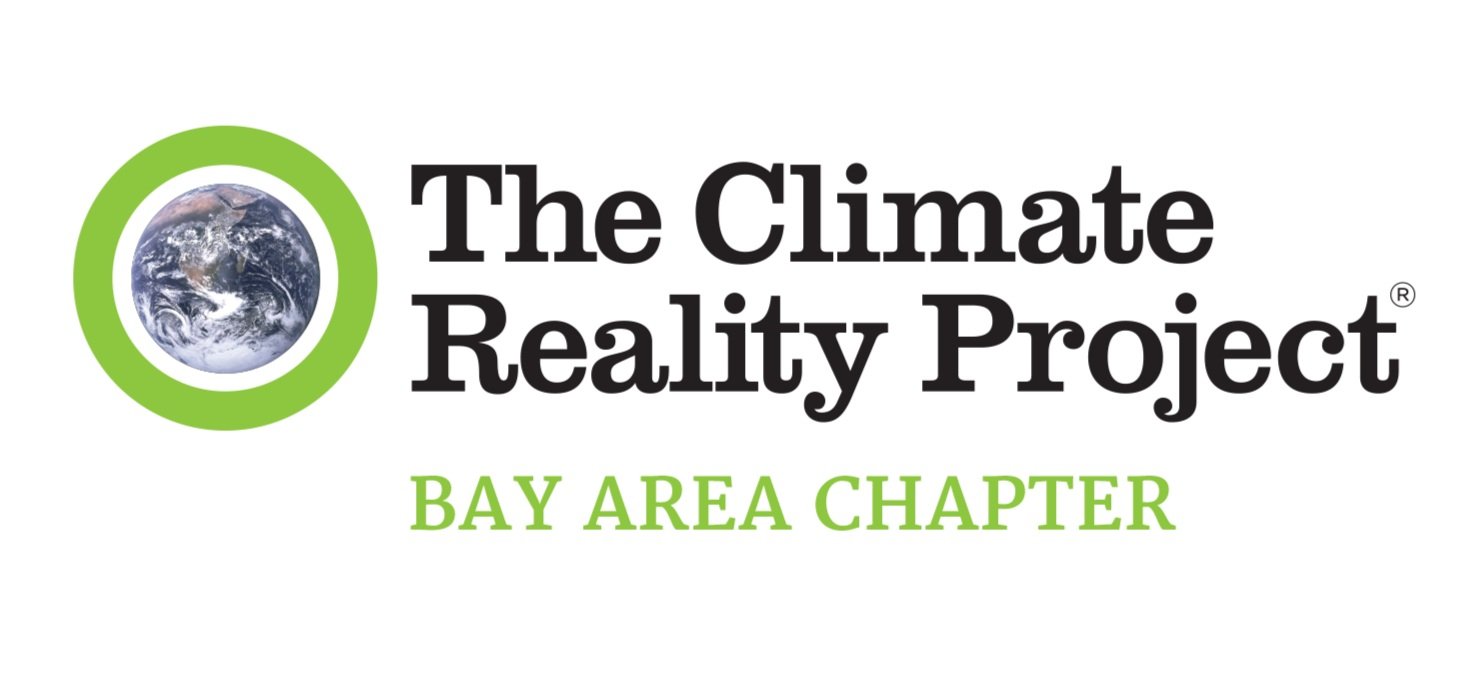“Everyday Climate Champions” Podcast Episode 1: Adapting to Droughts During the Climate Crisis
Written by Mina Rios
The Climate Reality Project - Bay Area Chapter launched the monthly Everyday Climate Champions podcast on September 21, 2022. We feature local “everyday people” from different walks of life who are putting climate solutions to work at home, school, the workplace, the community, and at policy levels. Our San Francisco Bay Area neighbors are addressing the climate crisis in big ways and we encourage our listeners to do the same. Tune in every month!
Learn more about Climate Reality Bay Area’s podcast, Everyday Climate Champions here.
“The landscape rebates that are offered through Valley Water have been absolutely instrumental in fueling great change. And there is a $2 per square foot rebate. So basically for every square foot of lawn you take out, they will pay you $2.” - Stephanie Morris
Transcript: here
Guest: Stephanie Morris, Landscape Designer with the City of San Jose’s Climate Smart initiative, has been helping Bay Area residents and business owners transform their outdoor space for 25 years. In 2022, Morris was named San Jose’s Climate Smart Water Conservation Champion.
Host: Sean Mendelson
Summary: In this first podcast episode, Landscape Architect Stephanie Morris discusses mindful water usage and the benefits of native plant gardens. Morris underscores the popularity of landscape rebates through Santa Clara County’s Valley Water.
Why This Matters: California’s need to conserve water is now constant as the effects of climate change continue to foster and exacerbate our ongoing drought. Although the recent steady growth of lawn conversions to drought-tolerant native plant gardens has been encouraging, our state needs significantly more participation to decrease water demand and reap the benefits of our existing ecosystem. Fortunately, counties throughout the Bay Area offer invaluable water-saving resources and money-saving programs to help people make the positive transition easily and cost-effectively.
Key Takeaways
The City of San Jose’s Climate Smart initiative is dedicated to reducing air pollution, saving water, and improving the local quality of life.
Landscape Designer, Stephanie Morris, began her line of work with the intention of leaving the world in a better place for her children.
The region's native Muwékma Ohlone peoples have largely influenced our understanding of how native plants nourish pollinators and the soil itself.
With over 6,500 plant species from different habitats around the state, a variety of species can be drawn into an urban landscape like insects, lizards, and many bird species.
Though new plants generally take six months to over a year to mature, the biodiversity of local insects and birds becomes apparent soon after seedlings are planted.
Local Santa Clara County water company Valley Water offers a rebate of $2 per square foot of lawn removed and replaced with drought-tolerant plants. A plant list is available on the website.
Landscape rebates have helped fuel great change, as more people than ever convert their lawns. Rebate savings range up to $3,000.
How to Take Action
Practical water conservation methods and strategies for home and business practices:
Request a frequent water billing cycle from your water utility company. The data can help assess water use to help you make adjustments.
Replace spray irrigation with drip irrigation. Recommended low-cost landscaping programs include Lawn Busters, Earth Care Landscaping and Natural Front Yards.
Collect water in a bucket while showering; then use gray water for plants or to flush the toilet.
Turn off the shower between soaping and shampooing.
Use sheet mulching in landscaping. Add a layer of cardboard, then cover with three to five inches of wood chips. This will hold moisture in during hot weather.
Water plants at night or in the early morning.
Add an aerator to kitchen and bathroom sinks at home and work.
Replace unused lawns with low-water plants, mixed species flowering plants, or ornamental grasses.
Eat more plant-based foods; they require less water to grow than meat.
Use rain barrels to collect rainwater.
Interested in viewing how some local homes have sustainably converted their outdoor spaces? Visit the annual Growing Native Garden Tour homepage to learn about in-person and virtual tours.
Concerned residents may share observations of water waste in Santa Clara County by emailing WaterWise@valleywater.org or calling 408-630-2000. For educational reasons, people are encouraged to use a polite approach when sharing observations of water waste.
Related Websites:
Landscape Rebate Program from Santa Clara Valley Water District: Encourages residents and businesses to convert high-water use landscape/irrigation to low-water use landscape/irrigation - available until June 30, 2023 or until funds are depleted.
Our City Forest: A Lawn Busters program that provides on-site assessments and planning, planting, and quality assurance follow-up. Also helps with affordability issues.
NativePlantDesign.com: Stephanie Morris's landscape design company
Santa Clara Valley Water District: Report water waste: e-mail waterwise@valleywater.org or call 408-630-2000
South Bay Green Gardens: Different ideas for how to preserve landscapes
The Wild Yards Project: A podcast on transforming lawns into biodiverse habitats
Homegrown National Park: A grassroots call to regenerate biodiversity and ecosystem function with native plants in your own lawn
Contact Us: Do you know a Bay Area-based Everyday Climate Champion? We’d love to interview them! Or just want to share a comment or hear about new episodes?
Get in touch: crba.eccpodcast@gmail.com
Get notified of new episodes HERE
Podcast Production Team: Executive Producer: Dalya Massachi; Sound Designers: Kayla Anchell, Trevor Skerbe; Co-Hosts/Researchers: George Dy, Ellisa Feinstein, Isabella Genereaux, Sean Mendelson, Hasini Parepalli, Lex Schrader, Alex Williams; Logo Designer: Gabriela Vargas
